Number #4 in an occasional series of short posts about feedback, appearing in no particular order.
In many schools, there is a literacy ‘marking code’ by which all teachers are meant to abide. Typically, spelling errors are marked with an ‘S’, punctuation errors with a ‘P’ and so on. Some of these codes are highly complex; some are simpler. These codes are intended to improve standards in written accuracy across the curriculum by promoting consistent messages, by making corrections instantly recognisable and – importantly – by raising the status (and teachers’ awareness) of spelling, punctuation and grammar.
I would be very interested to hear of examples where these are working well, and why. They may well sometimes succeed. However, in my experience, they often go wrong. These are some of the problems they can present.
1 They don’t get followed
I have never yet seen a code being followed for long. This is sometimes because they are not launched in such a way that teachers invest in them. Sometimes it is because they are not enforced with enough energy. Sometimes it is because they don’t feel like enough of a priority. Mainly, however, it is because of a mixture of the following points.
2 They are too blunt
It is rare for such policies to specify which particular errors should be attended to when, or what proportion of errors should be marked, or in which pieces. If the implication is that every error, in every piece of work, has to be marked, then it is easier just to ignore the policy. For a policy to work, there needs to be discussion and understanding of how to select errors for attention. Maybe punctuation in one piece and spelling in another, or close marking of one paragraph only, or selective marking throughout.
Teachers who are particularly practised in the marking of technical accuracy (primary teachers, perhaps, or secondary English teachers) learn to triage errors as they go along, making quite sophisticated decisions about when to them leave alone, when to nod gently towards them, and when to point them out emphatically. They learn to be differently-selective for different pupils. They learn that some errors have clearly become immune to marking. (If a pupil has been told for years to capitalise sentences, then that’s just not working.) And they learn to respond differently to different types of mistake – which is what the next point is about.
2 They aren’t about teaching
Marking is (or should be) a part of teaching, not something else bolted on. Therefore, any time spent putting pen to paper must have a teaching function. The codes rarely provide for this, as they don’t differentiate between different kinds of error or ways of correcting. For example, a code which specifies that a spelling mistake must be underlined or given an ’S’ in the margin doesn’t recognise the different ways in which pupils misspell, and the different teaching responses these might require – if any. For example:
For laziness, just pointing it out might be appropriate.
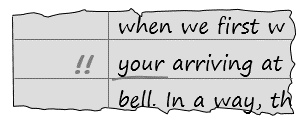
If it’s an inaccurate guess, then comparison with another word might help.
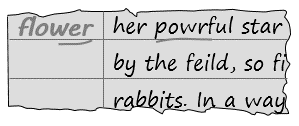
Or they may need reminding about a pattern in the way words start or end.
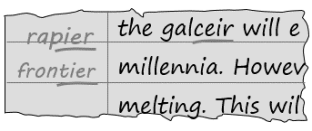
A student may benefit from a reminder about letter order.
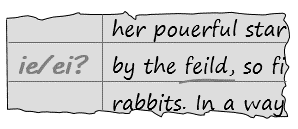
They may need pointing to the composite meaning of parts of the word.
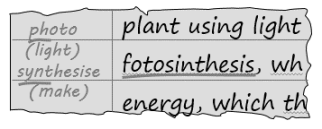
If it’s a word which they just need to learn, then maybe make them find it out.

One reason teachers don’t use a code is because they realise that it is too unrefined to be properly useful, and they don’t have the time (there and then) to be as attentive, as diagnostic and as elastic in response as they know they need to be.
3 They shouldn’t be necessary
Arguably, if a student has handed in work with these sorts of error, then it isn’t finished. Why haven’t they proof-read it? If they have, do they know how to do this properly? A classroom culture in which work is simply not regarded as ready for handing in unless it has been proof-read is more powerfully supportive of students than one in which teachers simply do this for them. I have seen this work well, although usually confined to a particular teacher or department. A whole-school ‘proof-reading policy’ might be transformative.*
4 They wrongly define ‘literacy’
These codes are often introduced and named as ‘literacy’ marking policies. In fact, they are just about spelling, punctuation and grammar, which is only a small part of literacy. Subject specialists are usually only too aware that this is not the most important point of intersection between their own subject and ‘literacy’. That, of course, is the language of their subject – the words and the forms through which it is understood and through which it is communicated.
‘Marking for literacy’ (or feedback for literacy) should be about all aspects of expression and communication; subject specialists should be ‘marking for literacy’ because (and in such a way that) it benefits and relates to their subject discipline – not because of a policy. This principle should be made explicit to students, too:
Remember, scientists need to be able to communicate with precision, so…
A historical argument is not convincing if the spelling is erratic.
Complex ideas can only be expressed clearly if you use commas properly.
Technical terms have to be spelt correctly.
As with any policy or formal set of expectations, a ‘marking for literacy’ policy will only be as good as the reflection, discussion and training with which it is introduced and supported. Teachers and teams of teachers need to spend time understanding and agreeing what literacy means in their subject, and the implications of this for how feedback and marking operate in and for their subject.
* Thanks to @DavidDidau for a reminder about this bit. See here.

Great article. I agree that using codes shouldn’t be entirely or even mainly for literacy.
For me they are simply a huge time saver when marking GCSE and especially A Level essays, which generally speaking don’t carry a heavy weighting of “SPAG” marks. I use the codes to highlight quickly where a point could be developed further or where deeper evaluation might improve the argument given, for example.
LikeLiked by 1 person
Yes – codes used like this, for elements other than SPG, can be powerful.
LikeLike
Hi James
Good to meet you at the EMC the other day! Just wanted to ask then – if you’re marking a piece of work and there are SPG errors (and you think the student has proof-read to the best of their ability) how do you go about responding to these in your marking, in a way that is still time-efficient? Would you indicate where they have made a mistake, for example, or write a comment at the end directing them to find specific types of errors?
Thanks,
Alison
LikeLike
Hi Alison – really good to meet you too! It’s hard to generalise, I think. I suppose the key is: what will best ‘teach’ this student, at this point? It may be best noted for addressing in lesson time, or as part of a whole-class intervention. Or it may well be that a bit of marginal ‘teaching’ is appropriate – as in the spelling examples I give in the blog. A lot depends on the capacity of the individual for independent follow-up, I think.
LikeLike
Hi Alison – really good to meet you too! It’s hard to generalise, I think. I suppose the key is: what will best ‘teach’ this student, at this point? It may be best noted for addressing in lesson time, or as part of a whole-class intervention. Or it may well be that a bit of marginal ‘teaching’ is appropriate – as in the spelling examples I give in the blog. A lot depends on the capacity of the individual for independent follow-up, I think.
LikeLike